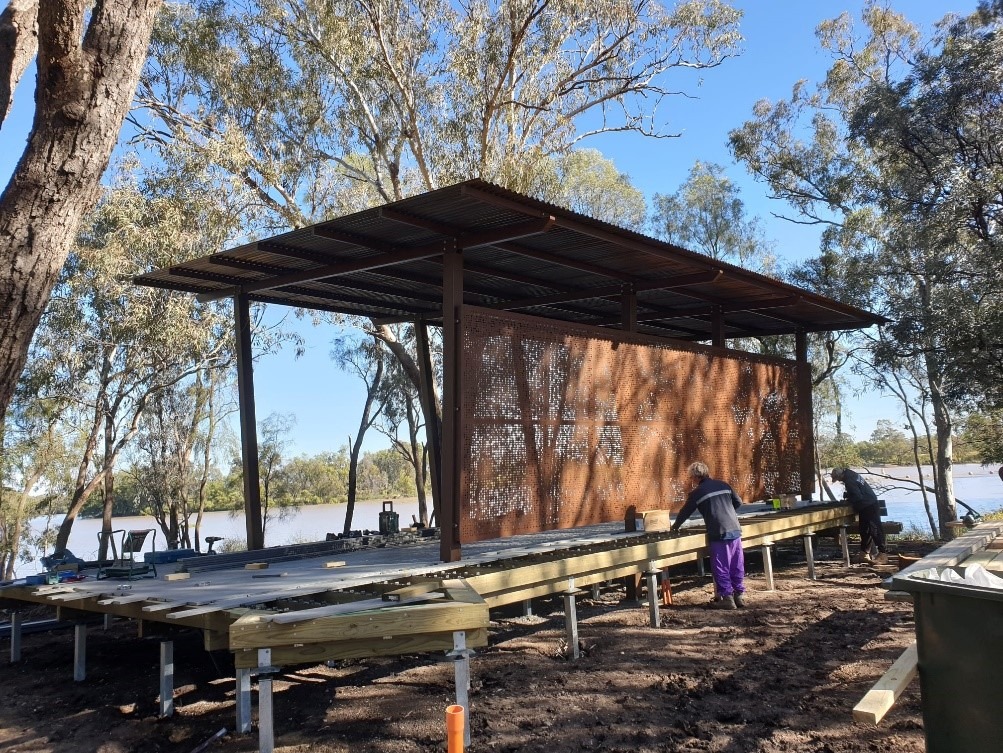As Southeast Queensland experiences a diverse and sometimes extreme climate, residents and businesses alike seek protection from the elements while enjoying the outdoors. With temperatures soaring in summer, tropical rainstorms, and varying wind conditions, having reliable and durable shade structures is essential for year-round comfort.
In this article, we explore how multi-award-winning shade structure manufacturer and installer Versatile Structures is designing weather-resistant solutions tailored to withstand Queensland’s climate, providing businesses and communities with outdoor spaces that are safe, comfortable, and long-lasting.
Understanding Queensland’s Climate Challenges
Queensland’s climate is unique, characterized by hot summers, mild winters, and heavy seasonal rainfall, particularly in the subtropical regions of the south-east. The average summer temperature hovers around 30°C, with humidity often making it feel much hotter. During the summer months, Queensland is also susceptible to severe storms, with strong winds and heavy rainfall.
For shade structure manufacturers, these environmental factors present distinct challenges. Not only must their designs provide adequate protection from the sun, but they also need to be engineered to withstand heavy rain, strong winds, and potential cyclonic conditions. The structures must be built to last, offering businesses and property owners peace of mind that their investment will hold up in all weather conditions.
Key Design Considerations for Weather-Resistant Shade Structures
When creating weather-resistant shade structures for Queensland’s climate, several key factors come into play:
1. Material Selection
The choice of materials is critical in ensuring a structure’s durability. For sun protection, shade fabrics must be capable of blocking harmful UV rays while remaining breathable to allow airflow and prevent heat buildup beneath the structure. High-quality shade fabrics, such as PVC-coated polyester and HDPE (high-density polyethylene), are often used for their superior UV protection, weather resistance, and long lifespan. These materials can block up to 98% of UV radiation, reducing the risk of skin damage and making outdoor spaces safer and more comfortable.
When it comes to withstanding wind and rain, the frame construction is equally important. Structural components must be corrosion-resistant and strong enough to endure high wind loads and rainwater drainage. Galvanized steel, powder-coated aluminium, and stainless steel are commonly used for their strength and ability to resist rust and corrosion. These materials help prevent structural failure during severe weather events, ensuring longevity and minimal maintenance over time.
2. Wind Resistance
Southeast Queensland is prone to strong winds, particularly during storm season. As such, shade structures need to be designed with wind loads in mind. The wind rating of a structure is a critical element in its design and installation process, ensuring it can withstand wind speeds typical in Queensland’s climate.
Shade structure manufacturers often rely on wind engineering principles to optimize their designs. Wind-tunnel testing and advanced computer simulations are used to assess how a structure will perform under various wind conditions. This helps to refine the design, ensuring the structure remains stable even during intense wind events.
For higher-risk areas, retractable shade solutions or tensioned membrane structures are often recommended. These designs allow for the shade to be retracted during extreme weather, preventing damage and prolonging the lifespan of the structure. Similarly, tensioned fabric structures are engineered to remain taut under high wind loads, reducing the risk of flapping or tearing in severe conditions.
3. Rainwater Management
Queensland’s summer storms can bring intense rainfall over short periods. Proper rainwater management is essential to prevent pooling on shade fabric, which can cause sagging, water damage, and structural failure.
To combat this, shade structures are typically designed with sloped or curved surfaces to encourage water runoff. Rainwater can flow away from the structure rather than accumulating on top. In addition, many modern shade structures incorporate integrated gutter systems and drainage channels, ensuring water is effectively directed away from key areas like walkways, seating zones, and entryways.
Types of Weather-Resistant Shade Structures
Several types of shade structures are well-suited to Queensland’s demanding climate. Each design offers unique benefits, providing reliable protection while enhancing the aesthetics and functionality of outdoor spaces.
1. Cantilevered Structures
Cantilevered shade structures are popular for their sleek, modern design and practical benefits. These structures are supported by a single row of posts on one side, allowing for maximum open space underneath. This is ideal for parking lots, playgrounds, poolside areas, and seating areas where unobstructed space is a priority.
Cantilevered designs can be engineered to withstand high winds and rain. The structure’s open design reduces wind resistance, and the fabric’s tensioned shape encourages water to run off quickly.
2. Tensioned Fabric Structures
Tensioned fabric structures are designed to be visually striking while offering exceptional strength and durability. The fabric is stretched over a framework, creating a taut surface that resists wind and rain. The fabric’s flexibility allows it to bend under pressure rather than breaking, making these structures particularly effective in windy conditions.
In addition to their functional benefits, tensioned fabric structures are highly customizable. They can be shaped into unique forms that complement the surrounding architecture, providing businesses with both practical protection and eye-catching design elements.
3. Retractable Shade Systems
Retractable shade systems offer a versatile solution for properties in areas prone to extreme weather. These systems allow users to extend the shade when needed and retract it during severe weather conditions. This protects the structure from potential damage during high winds or heavy rain.
Retractable systems are often motorized for ease of use and can be controlled with remote systems or automated sensors. They are a popular choice for outdoor dining areas, entertainment spaces, and pool decks, where flexibility is key.
The Importance of Professional Installation
While design and materials play a critical role in the performance of a shade structure, professional installation is equally important. Properly anchoring the structure ensures that it remains secure during high winds, heavy rains, or other severe weather events. Experienced installers understand the local climate and terrain, enabling them to position the structure for optimal performance.
Moreover, adherence to Australian building codes and standards ensures that shade structures meet or exceed the necessary requirements for safety and durability. Local shade structure manufacturers are well-versed in these codes, ensuring that their products not only look great but also stand the test of time.
Conclusion
Designing shade structures for Queensland’s climate requires a deep understanding of the local weather patterns and the unique challenges they pose. By selecting high-quality materials, incorporating wind and rain-resistant design features, and relying on expert installation, businesses and property owners can create outdoor spaces that provide protection and comfort all year round.
As a multi-award-winning shade structure manufacturer and installer, ensuring durability, safety, and aesthetics in every project is key. Whether it’s a commercial property, a community park, or a residential outdoor area, weather-resistant shade structures help create spaces that can be enjoyed throughout the year, no matter what the Queensland climate brings.

